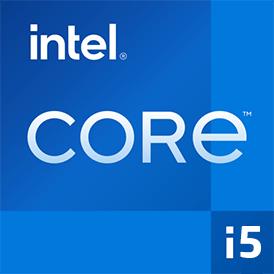 Geekbench 3, 64bit (Multi-Core)
Geekbench 3, 64bit (Multi-Core)
|
|
AMD EPYC 7301
16C 32T @ 2.2 GHz
|
35367
|
|
|
Intel Core i5-6685R
4C 4T @ 3.2 GHz
|
12544
|
 Estimated results for PassMark CPU Mark
Estimated results for PassMark CPU Mark
|
|
AMD EPYC 7301
16C 32T @ 2.2 GHz
|
14998
|
|
|
Intel Core i5-6685R
4C 4T @ 3.2 GHz
|
5497
|
 Geekbench 5, 64bit (Multi-Core)
Geekbench 5, 64bit (Multi-Core)
|
|
AMD EPYC 7301
16C 32T @ 2.2 GHz
|
8864
|
|
|
Intel Core i5-6685R
4C 4T @ 3.2 GHz
|
3215
|
 Geekbench 3, 64bit (Single-Core)
Geekbench 3, 64bit (Single-Core)
|
|
Intel Core i5-6685R
4C 4T @ 3.2 GHz
|
4037
|
|
|
AMD EPYC 7301
16C 32T @ 2.2 GHz
|
3175
|
 Cinebench R15 (Multi-Core)
Cinebench R15 (Multi-Core)
|
|
AMD EPYC 7301
16C 32T @ 2.2 GHz
|
2033
|
|
|
Intel Core i5-6685R
4C 4T @ 3.2 GHz
|
597
|
 iGPU - FP32 Performance (Single-precision GFLOPS)
iGPU - FP32 Performance (Single-precision GFLOPS)
|
|
Intel Core i5-6685R
4C 4T @ 3.2 GHz
|
1325
|
 Geekbench 5, 64bit (Single-Core)
Geekbench 5, 64bit (Single-Core)
|
|
Intel Core i5-6685R
4C 4T @ 3.2 GHz
|
951
|
|
|
AMD EPYC 7301
16C 32T @ 2.2 GHz
|
761
|
 Cinebench R15 (Single-Core)
Cinebench R15 (Single-Core)
|
|
Intel Core i5-6685R
4C 4T @ 3.2 GHz
|
156
|
|
|
AMD EPYC 7301
16C 32T @ 2.2 GHz
|
119
|
 Cinebench R11.5, 64bit (Multi-Core)
Cinebench R11.5, 64bit (Multi-Core)
|
|
AMD EPYC 7301
16C 32T @ 2.2 GHz
|
20.6
|
|
|
Intel Core i5-6685R
4C 4T @ 3.2 GHz
|
6.6
|
 Cinebench R11.5, 64bit (Single-Core)
Cinebench R11.5, 64bit (Single-Core)
|
|
Intel Core i5-6685R
4C 4T @ 3.2 GHz
|
1.8
|
|
|
AMD EPYC 7301
16C 32T @ 2.2 GHz
|
1.5
|

